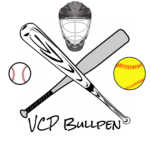Finally swinging without pain, Stott could be in for a different year originally appeared on NBC Sports Philadelphia
A week or so after the Phillies’ postseason ended last October with a disheartening NLDS loss to the Mets, Rob Thomson and Dave Dombrowski made clear that they were looking for the offense to do things a bit differently in 2025.
For the second straight year, they preached selectivity. They also said they wanted their hitters to do a better job of utilizing the whole field. The specific names mentioned most that afternoon were the middle infielders, Trea Turner and Bryson Stott.
Turner was out for personal reasons on Monday. He is expected to arrive in Clearwater and take his physical on Wednesday. He and his wife Kristen are expecting their third child.
Stott has been at the spring training complex since pitchers and catchers reported last week. He’s in a much better place physically. He’s coming off a trying year in which he dealt with an elbow injury for most of the season and underperformed as a result.
There were times last season when Thomson considered shutting his second baseman down, but Stott played all the way through it, appearing in 148 games.
“Looking back, I wasn’t healthy,” Stott said Monday afternoon. “I was good enough to play and I’m not going to make excuses for that, I want to play. You never want to sit on the bench or anything. Just kind of sat back and let my arm heal up and be ready to go this year.”
Stott did damage to a nerve in his right elbow late last May in Miami.
“I was hitting really good. I was like, ‘All right, I’m feeling back to normal,’” he said.
“After the rough first month, kind of got it going. Took a weird swing. It made my pinky go numb. And I was like, ‘It’s whatever.’ Then I took another one a week or so later and it just kind of lingered the whole time.”
Stott did not feel pain with every swing. When he connected bat to ball, things felt normal. It was when he was out in front of a pitch that the hyperextension would bother him.
“It was just the swing-and-miss or a ball off the end of the bat or any hyperextension,” he said. “It would take my fingers go numb. I’d have to call time and then it’d feel fine. I think as I kind of kept going and going, it got weaker and weaker.
“I still tried to put together long at-bats. It’s not like I had a limp right arm. When I hit the ball, it was fine.
“… I was trying to compensate with different parts of my body. It…

